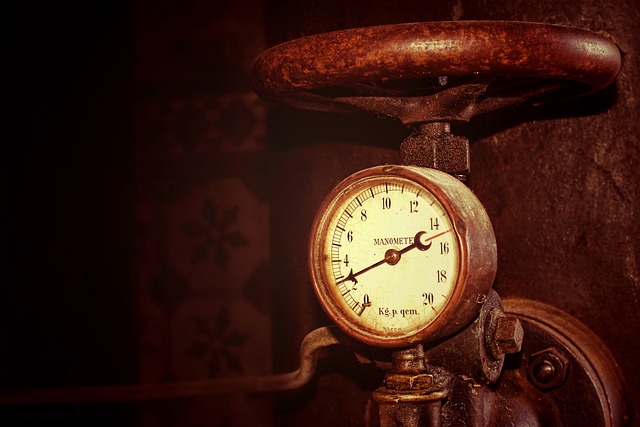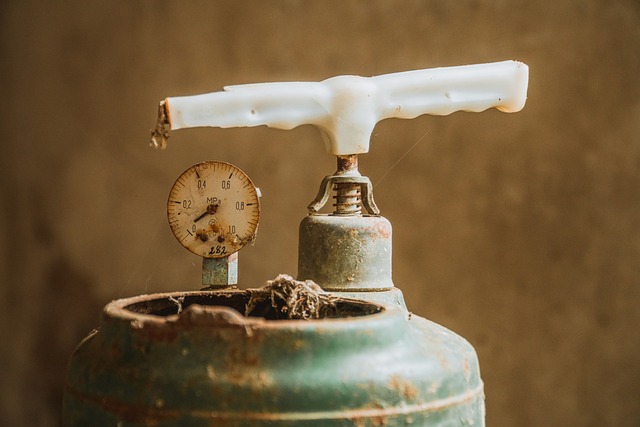Low water pressure can result from plumbing leaks, faulty pressure regulators, or sediment buildup in older homes. Solutions range from fixing leaks and replacing aerators to installing new pressure regulators or booster pumps for severe cases. Regular maintenance, including regulator checks and cleaning, prevents issues like leaks and buildup, saving costs and improving overall plumbing health.
Tired of dealing with weak shower streams and sluggish faucets? You’re not alone. Low water pressure is a common household nuisance, often caused by hidden obstructions in your pipes. This article guides you through a series of effective solutions, from addressing plumbing leaks to installing a pressure regulator. We’ll also explore simple fixes like faucet aerators for improved flow rate and delve into the importance of managing sediment buildup with a booster pump.
- Understanding Low Water Pressure: Common Causes and Solutions
- Plumbing Leaks: How to Identify and Fix Them Effectively
- The Role of a Pressure Regulator in Your Plumbing System
- Improving Flow Rate with Faucet Aerators: A Simple Guide
- Addressing Sediment Buildup and the Need for a Booster Pump
Understanding Low Water Pressure: Common Causes and Solutions

Low water pressure can be a frustrating issue for any homeowner, making simple tasks like taking a shower or washing dishes much less enjoyable. Understanding the common causes behind this problem is the first step to finding effective solutions. One of the primary culprits is plumbing leaks, which can occur in various parts of your plumbing system, leading to a decrease in water pressure throughout your home. Regular maintenance checks and prompt repair of any detected leaks are crucial to maintaining optimal water pressure.
Another less obvious cause could be a faulty pressure regulator, responsible for controlling the water pressure entering your home from the main supply line. Over time, these regulators can malfunction or become adjusted incorrectly, resulting in reduced water pressure at faucets and appliances. Installing a new or replacing an old pressure regulator can significantly improve this issue. Additionally, sediment buildup in pipes or fixtures, especially in older homes, can restrict water flow, leading to low pressure. Removing these deposits through professional cleaning services is often necessary. For more severe cases where the water source itself has low pressure, a booster pump might be required to increase the pressure at the point of use.
Plumbing Leaks: How to Identify and Fix Them Effectively

Plumbing leaks can be a sneaky problem, often going unnoticed until they cause significant damage. Identifying and fixing them early is key to maintaining a smooth-running plumbing system. One of the most obvious signs of a leak is a sudden drop in water pressure. If your faucets are flowing slower than usual or your shower pressure has weakened, it might indicate a leak somewhere in your pipes. Check for any visible signs like dripping water around fixtures or walls, and don’t overlook potential sources like outdated or damaged faucet aerators, which can contribute to low water pressure due to restricted flow.
Fixing plumbing leaks involves pinpointing the source, which could range from simple issues like loose connections to more complex problems like broken pipes or faulty valves. Addressing a leak early can save you from costly repairs and potential water damage. If the issue persists, consider checking your pressure regulator—it maintains consistent water pressure throughout your home. Over time, sediment buildup can affect its performance, leading to low water pressure. Installing a booster pump may also be necessary if your home is on a higher elevation or has a poor water supply, ensuring adequate water pressure for all fixtures.
The Role of a Pressure Regulator in Your Plumbing System

In many homes, low water pressure is a common issue that can be attributed to various factors, including clogged pipes or inefficient plumbing components. One often-overlooked element in the mix is the pressure regulator. This device plays a pivotal role in maintaining consistent water pressure throughout your home’s plumbing system. By regulating the incoming water pressure from the main supply, it ensures that each faucet and appliance receives the appropriate amount of pressure, preventing sudden drops that can lead to low water pressure issues.
When sediment buildup or plumbing leaks occur, they can disrupt the balance within your system. Over time, these problems may necessitate the installation of a booster pump to compensate for lost pressure. However, before reaching for this solution, it’s essential to check and maintain the pressure regulator. Many modern regulators feature faucet aerators that not only enhance water flow but also help alleviate minor pressure issues. Regularly inspecting and cleaning these components can significantly contribute to maintaining optimal water pressure, ensuring your plumbing system runs efficiently and effectively, and saving you from potential costly repairs down the line.
Improving Flow Rate with Faucet Aerators: A Simple Guide

Low water pressure can be a frustrating issue, often caused by various factors such as plumbing leaks or sediment buildup in your pipes. One simple and cost-effective solution to consider is installing faucet aerators. These devices mix air with water, improving flow rate and enhancing the overall performance of your faucets. By reducing the chance of clogging and adding aeration, faucet aerators can significantly boost water pressure, especially when dealing with old or hard water systems.
When it comes to fixing low water pressure, a pressure regulator is another valuable tool. This device ensures a consistent water pressure level by adjusting incoming water according to your needs. However, if the issue persists, a booster pump might be required to increase water pressure throughout your entire plumbing system. By addressing these issues, you can maintain optimal flow rates and prevent future plumbing problems related to low water pressure or sediment buildup.
Addressing Sediment Buildup and the Need for a Booster Pump

Many homes experience low water pressure due to various factors, and one common cause is often overlooked—sediment buildup in pipes. Over time, tiny particles can accumulate, reducing water flow and leading to inadequate pressure at fixtures like faucets. This issue is especially prevalent in older homes with iron pipes, where corrosion can also contribute to the problem. Regular maintenance is key; fitting faucet aerators can help, as they mix air with water, making it feel stronger while actually increasing volume. However, if sediment buildup is significant or plumbing leaks are present, addressing these issues promptly is crucial.
In such cases, a booster pump might be necessary. These devices increase water pressure by boosting the force through pipes. They are particularly useful in homes with multiple stories or large water demands. A pressure regulator should also be considered; it maintains consistent pressure despite fluctuations in supply, ensuring a steady flow to all fixtures. By targeting sediment buildup and installing appropriate equipment, homeowners can enjoy improved low water pressure and say goodbye to frustrating plumbing issues.
